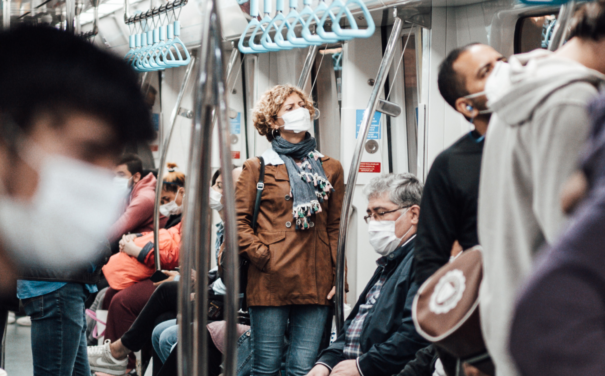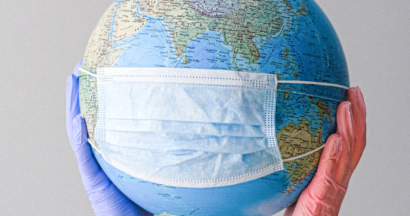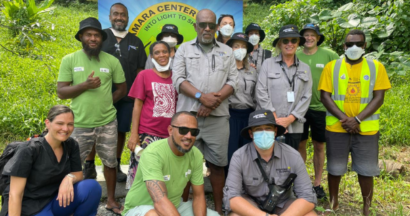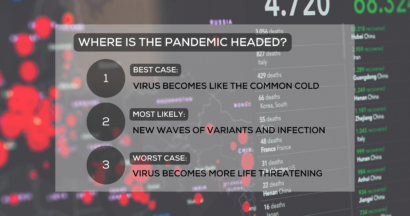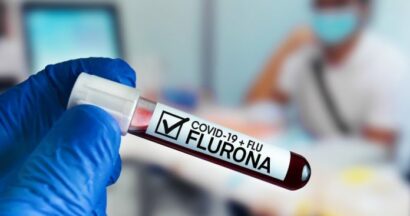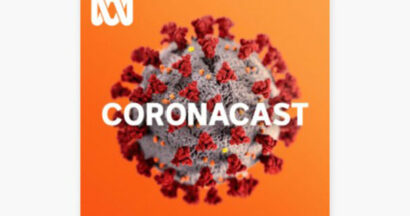Around the globe
Globally, reported new COVID-19 cases are again declining, almost as low as they have been at any time during the pandemic. In the past 12 months, the 7-day average for new cases has dropped from over 400 per million population per day to less than 40. Omicron viral types are still more than 99% of all isolates sequenced globally. The global pandemic has reached an interesting phase. In most of the world, reported case numbers are at or close to the lowest they have been since the pandemic began, although this picture is compromised by reduced surveillance, testing, and reporting in most countries; nonetheless, it is clear that cases really are much lower than even the recent past.
The exception has been China, which following the relaxation of COVID rules, is struggling through a massive epidemic. Fortunately, this also appears to have passed its peak, although case numbers can be expected to be very high for some weeks. Genetic data on the relatively small numbers of isolates reaching sequencing labs does not really offer many clues on how the evolution of the virus might progress. The past 12 months have been relatively stable in that fairly closely related sub-variants of the original Omicron strain have come to dominate circulation completely, and no truly different group has emerged.

In Australia
Australia and New Zealand again report declining cases following the rising trends observed in December 2022 and early January 2023. As a result, the 7-day average of new cases has fallen below 600 per million population per day in New Zealand and below 200 in Australia. Deaths in both countries, however, have risen (perhaps due to recent peaks in case numbers), reaching over 2 per million population per day in Australia recently.
If you’re wondering what the latest advice on COVID-19 is for your state or territory, we’ve provided a summary of the COVID-19 policies for employers and their employees, including healthcare workers and others, regarding mask-wearing, isolation, testing and reporting, and vaccination requirements across all states and territories.

Queensland
👉 Masks: Not required except for high-risk settings (hospitals, aged care facilities, corrective services facilities, disability accommodation settings) and if close contact, symptomatic, confirmed positive or waiting for test results.
👉 Isolation requirements: It is strongly recommended to isolate for at least 7 days after receiving a positive COVID-19 test result or while you have any symptoms of acute respiratory infection.
👉 RAT Testing and Reporting: It is recommended to report a positive test result.
👉 Vaccination Requirement – Health Worker: Health service employees must be up to date with their COVID-19 vaccinations. Health service employees are any Queensland Health employees employed under the Hospital and Health Boards Act 2011 in Hospital and Health Services and the Department of Health.
👉 Vaccination Requirement – Worksafe / OH&S: Employers may consider whether a COVID-19 vaccination policy is a reasonably practicable measure to control risks associated with exposure to COVID-19 in their workplace. If you determine that a workplace vaccination policy is a reasonably practicable control measure for your workplace, consider:
- whether employees should be required to have a COVID-19 vaccine to attend the workplace
- what level of vaccination employees should have
- what exceptions to vaccination should apply
- industrial relations obligations
- privacy and health obligations

New South Wales
👉 Masks: It is strongly recommended to wear a face mask in indoor public spaces and when you can’t physically distance from others, if you are positive. Some restrictions will continue to apply for high-risk settings such as health, disability and aged care.
👉 Isolation requirements: It is strongly recommended to stay home until acute symptoms have gone. Don’t visit high-risk settings for at least 7 days.
👉 RAT Testing and Reporting: It is required to report a positive result.
👉 Vaccination Requirement – Health Worker: All NSW Health workers are required to have received at least 2 doses of a COVID-19 vaccine and Category A workers are required to have three doses of a COVID-19 vaccine to work or be employed in connection with an NSW Health agency.
👉 Vaccination Requirement – Worksafe / OH&S: There is no public health order that mandates COVID-19 vaccination. Some workplaces may still require mandatory vaccination against COVID-19 under their own applicable work, health and safety obligations. Employers should take all reasonable steps to ensure compliance with any vaccination obligations. To determine if requiring workers to be vaccinated for COVID-19 is reasonably practicable, a range of factors should be considered such as:
- Any public health order that mandates the vaccination of workers in your workplace or industry.
- Advice from public health experts.
- The risk of exposure to COVID-19 in the workplace including assessment of local conditions.
- The nature of the workplace (such as the location, size and layout of the premises) and the effectiveness of existing control measures.
- The type of work being undertaken by workers. Some work tasks may place workers at higher risk of contracting or spreading COVID-19.
Department of Education staff no longer need to be vaccinated against COVID-19 as a condition of employment from 1 August 2022, except for staff working in schools for specific purposes (SSPs) who must maintain 2 doses of an approved COVID-19 vaccine, or hold a valid medical contraindication.

Northern Territory
👉 Masks: It is not required except for hospitals, aged care, disability, correctional and shelters.
👉 Isolation requirements: It is no longer a requirement to self-isolate following a positive COVID-19 test. Individual responsibility to stay home if unwell and show symptoms to limit the spread and protect our community.
👉 RAT Testing and Reporting: It is strongly recommended to RAT test if symptomatic or close contact, and report a positive test result.
👉 Vaccination Requirement – Health Worker: There are no mandatory requirements for workers in certain settings, however, vaccination in high-risk settings, such as disability services, is strongly recommended.
👉 Vaccination Requirement – Worksafe / OH&S: Unable to find specific information for NT.Fair Work Ombudsman. Employers can only require their employees to be vaccinated where:
- a specific law (such as a state or territory public health order) requires it
- the requirement is permitted by an enterprise agreement, other registered agreement or employment contract, or
- they give their employees a lawful and reasonable direction to be vaccinated. Whether a direction is lawful and reasonable is assessed on a case-by-case basis.
An employer may in certain circumstances be required to direct employees to get vaccinated to comply with obligations under a work health and safety (WHS) law.

Western Australia
👉 Masks: Mask-wearing is not required, except in high risks settings such as hospitals, healthcare settings, facilities for corrective services, residential aged care, and disability services.
👉 Isolation requirements: Isolate for at least 5 days.
👉 RAT Testing and Reporting: It is recommended to register a positive test.
👉 Vaccination Requirement – Health Worker: It is required for all health workers to be up to date with their COVID-19 vaccines.
👉 Vaccination Requirement – Worksafe / OH&S: WA’s mandatory vaccination policy no longer applies, however individual employers, workplaces, and certain professions may require their employees and visitors to be vaccinated against COVID-19.
Elements to consider:
- duty under work health and safety (WHS) legislation to eliminate or, if that is not reasonably practicable, minimise the risks of COVID-19 at the workplace so far as is reasonably practicable.
- must consult with workers on work health and safety issues, including reducing the risks from COVID-19 in the workplace.
- risks should be managed with regard to the hierarchy of control measures.

South Australia
👉 Masks: Masks are not required except in high-risk settings and if positive and planning to leave the house. However, it is still strongly recommended in indoor and crowded settings.
👉 Isolation requirements: It is not required but recommended to stay at home for 5-7 days until symptoms disappear.
👉 RAT Testing and Reporting: It is required to report a positive result.
👉 Vaccination Requirement – Health Worker: Up-to-date vaccination of COVID-19 vaccine and any additional COVID-19 vaccinations for healthcare workers.
👉 Vaccination Requirement – Worksafe / OH&S: There is no government directive to mandate COVID-19 vaccination in the workplace, therefore if wanting to mandate, COVID-19 vaccine policy must be considered as one of a broad range of control measures to reduce the risk of exposure to COVID-19 in workplaces. Before implementing mandatory vaccinations in their workplace, employers need to follow health and safety laws, such as consulting with workers and HSRs (need to do a proper risk assessment).

Tasmania
👉 Masks: It is not mandatory but is still recommended to wear masks for close contacts, confirmed cases and high-risk settings (e.g. hospitals).
👉 Isolation requirements: It is recommended to stay at home for at least 7 days.
👉 RAT Testing and Reporting: It is required to report a positive result.
👉 Vaccination Requirement – Health Worker: It is a requirement for all healthcare workers to be up to date with their COVID-19 vaccines.
👉 Vaccination Requirement – Worksafe / OH&S: Employers have duties under the Work Health and Safety Act 2012 to manage the risks of COVID-19, just as they do any other workplace hazard. If wanting to mandate vaccinations:
- Conduct risk assessment and apply the hierarchy of controls tools to help identify and assess COVID-19 risks and determine what controls will be effective to reduce risks.
Please be advised that the information provided is based on State and Territory websites and every effort has been made to ensure accuracy. However, these rules are subject to frequent changes. It is recommended to confirm their current status before making any modifications to policies or procedures.


